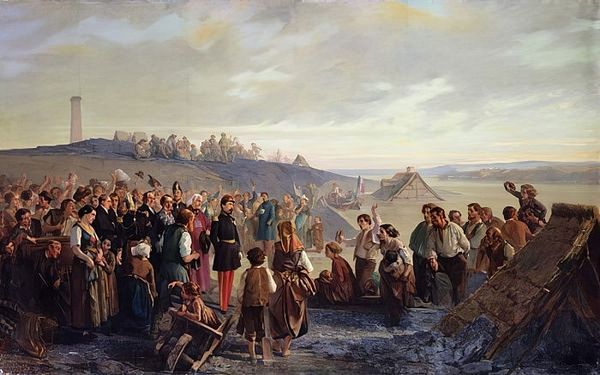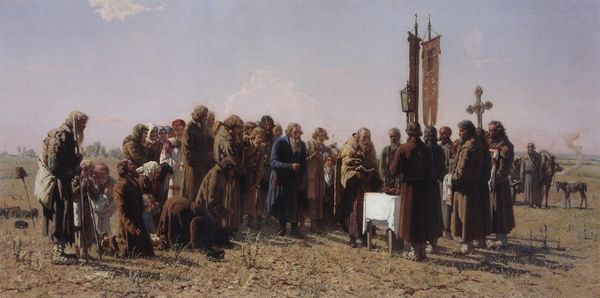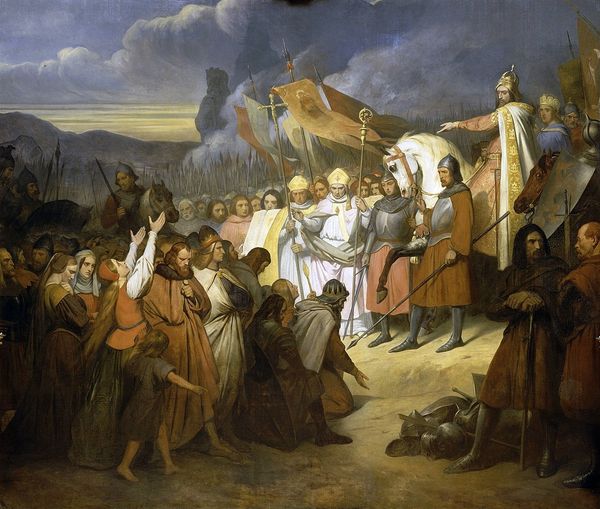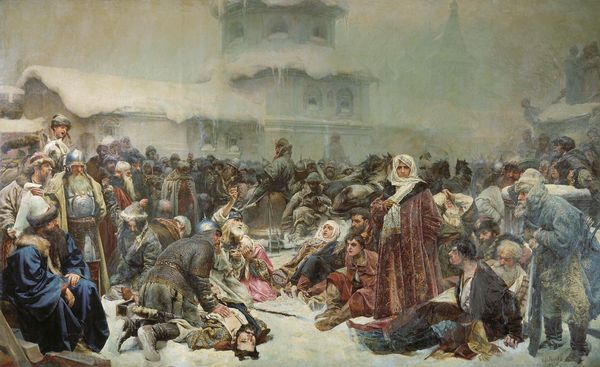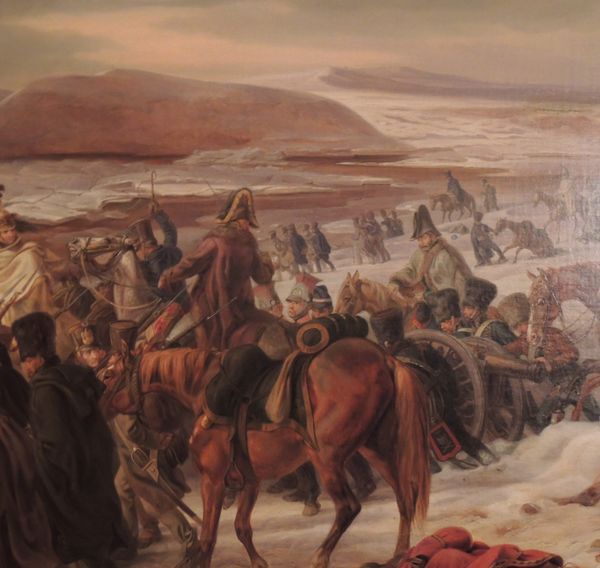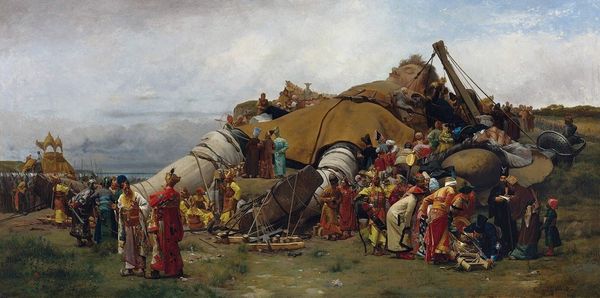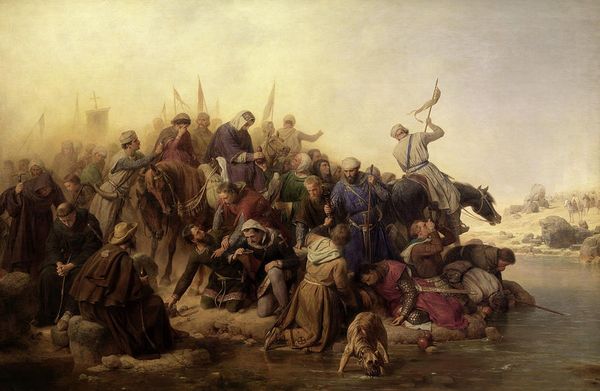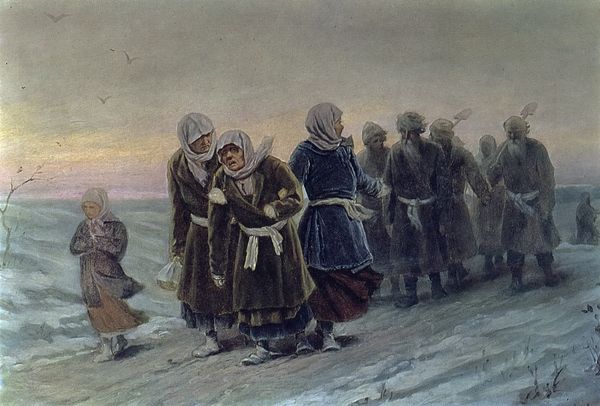
#
war
#
charcoal drawing
#
possibly oil pastel
#
oil painting
#
acrylic on canvas
#
underpainting
#
painting painterly
#
surrealist
#
portrait art
#
fine art portrait
#
digital portrait
Copyright: Public domain
Editor: Here we have "The Capitulation of Kars, Crimean War, 28 November 1855" by Thomas Jones Barker, painted in 1860. It seems to be an oil on canvas. I'm immediately struck by the somber atmosphere, this sense of defeat hanging heavy over the whole scene, which feels amplified by the cool color palette. What do you see when you look at this piece? Curator: It’s interesting how Barker frames the surrender. Rather than focusing on the battlefield itself, the painting places emphasis on the aftermath, highlighting the exchange of power and its human consequences. How do you think this painting might have been received in Britain, considering it depicts a campaign within the larger Crimean War, which involved British troops? Editor: I imagine there would be a mix of reactions. Pride in the overall war effort perhaps, but also maybe some uncomfortable questions about the human cost, even for the "defeated." Curator: Exactly. Paintings like this played a role in shaping public memory of the war. Barker strategically chose to depict a moment of negotiation, not brute force. Notice the figures prominently displayed - who appears to be offering the terms, and who receives them? This could indicate a particular narrative the artist, or his patrons, were keen to portray regarding British involvement. Editor: It's interesting that you point that out. Now that I look closer, the British figures do seem almost detached from the immediate suffering. Is that a common way to represent power in these types of historical paintings? Curator: Frequently. It's about constructing a narrative, a public image. Consider how portraits of political leaders often aim for a similar effect. Who gets remembered, and how, is always a political choice. So what lasting impressions does the artwork create? Editor: I now view the artist as portraying power through selective visuals that tell only a desired version of a more complex reality. Thank you! Curator: Indeed, considering art as historical narrative allows a richer engagement. It highlights art's public role.
Comments
No comments
Be the first to comment and join the conversation on the ultimate creative platform.

